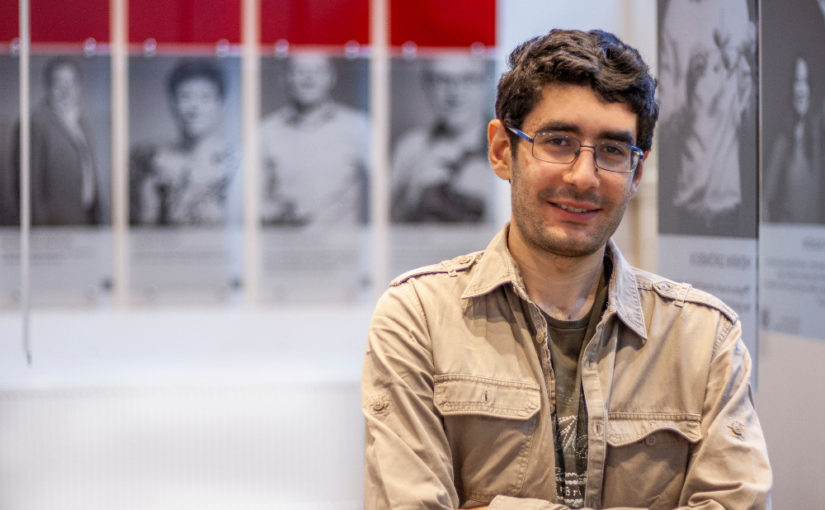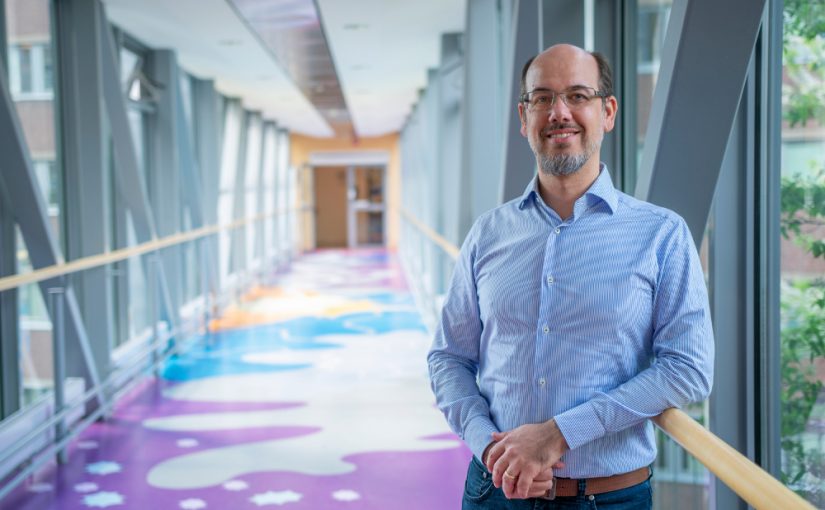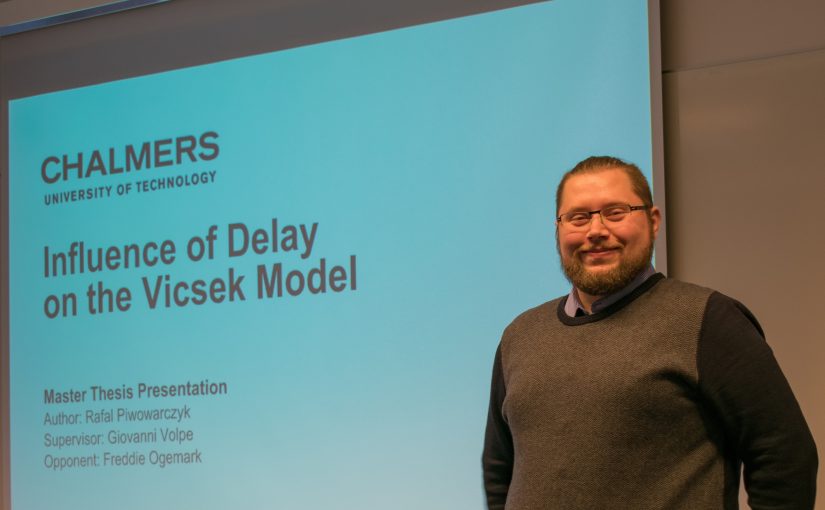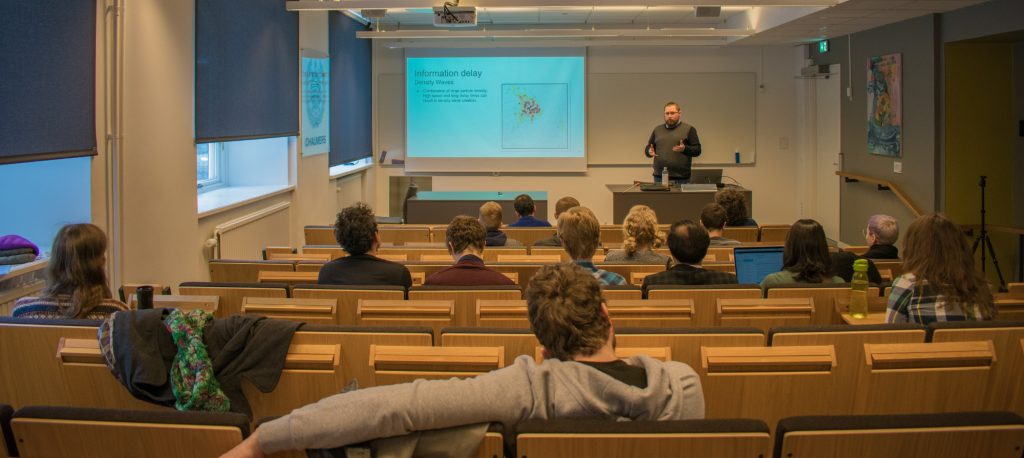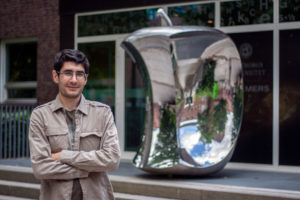
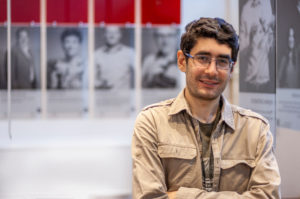 Francesco Patti is a PhD student in Physics at the University of Messina (started in October 2017). His master’s degree thesis was about “Theoretical study of the interaction between E.M. radiation and chiral nanomaterials” (July 2017) and now he is a visiting student at the Soft Matter Lab where he will work on modeling of optical forces in liquids and vacuum as well as modelling of passive and active stochastic systems“ (June-July 2018).
Francesco Patti is a PhD student in Physics at the University of Messina (started in October 2017). His master’s degree thesis was about “Theoretical study of the interaction between E.M. radiation and chiral nanomaterials” (July 2017) and now he is a visiting student at the Soft Matter Lab where he will work on modeling of optical forces in liquids and vacuum as well as modelling of passive and active stochastic systems“ (June-July 2018).
Category: Group Members
Antonio A. R. Neves visits the Soft Matter Lab. Welcome!
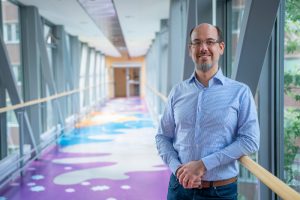 Antonio Alvaro Ranha Neves is a Visiting Professor from the Federal University of ABC in Brazil. His visiting position is financed through a FAPESP-ERC grant. He will visit us for 4 months from May 12, 2018, to September 12, 2018.
Antonio Alvaro Ranha Neves is a Visiting Professor from the Federal University of ABC in Brazil. His visiting position is financed through a FAPESP-ERC grant. He will visit us for 4 months from May 12, 2018, to September 12, 2018.
He works mainly with optical tweezers studying optical forces with both experimental and theoretical tools.
He obtained his Ph.D. in physics in 2006, at the State University of Campinas (Brazil). From 2006 to 2012, he worked as a postdoctoral researcher at the National Nanotechnology Laboratories of the Nanoscience Institute in Lecce (Italy), within the Soft-matter division. Since 2012, he is a professor at the Federal University of ABC (Brazil), accredited in the graduate program of Nanoscience and Advanced Materials.
His main research interest is in the field of light-matter interaction, with a special focus on the applications of optical tweezers as well as linear and multi-photon spectroscopy as well. His current line of research is the study of bull sperm motility with optical tweezers, and starting the characterization of thermal properties of metallic nanoparticles in optical traps.
Rafal Piwowarczyk defended his Master Thesis. Congrats!
Rafal Piwowarczyk defended his Master thesis in Complex Adaptive Systems at Chalmers University of Technology on 19 February 2018
Title: Influence of Delay on the Vicsek Model
The aim of this work is to show that sensorial delay influences the behaviour of self-propelling agents using self-aligning interactions. The model was based on the Vicsek model, which is a two-dimensional system of self-propelling particles that are able to detect and align with each other within a certain radius. We prove that the introduction of short delays favours cluster and swarm formation, while extending the delay to higher values or implementation of negative delays significantly harms this process. We introduce a global clustering parameter, which is based on the use of the Voronoi tessellation, which allows us to measure the emergence of clusters. The sensorial delay might play a crucial role in systems that exhibit swarming behaviours and it’s better understanding can result in the construction of key tools for the realisation and manipulation of complex networks of autonomous robots.
Name of the master programme: MPCAS – Complex Adaptive Systems
Supervisor: Giovanni Volpe, Department of Physics, University of Gothenburg
Examiner: Giovanni Volpe, Department of Physics, University of Gothenburg
Opponent: Freddie Ogemark, MP Complex Adaptive Systems, Department of Physics, Chalmers University of Technology
Place: PJ, lecture hall, Fysik Origo, Fysik
Time: 19 February, 2018, 11:00
Maximilian Leyman joins the Soft Matter Lab
Maximilian Leyman joined the Soft Matter Lab on 15 January 2018.
He is a Master student in the Complex Adaptive Systems Master at Chalmers University of Technology.
He will work on his Master thesis on the numerical study of the motion of robots with sensorial feedback.
Freddie Ogemark joins the Soft Matter Lab
Freddie Ogemark joined the Soft Matter Lab on 12 January 2018.
He is a Master student in the Complex Adaptive Systems Master at Chalmers University of Technology.
He will work on his Master thesis on the experimental study of the motion of robots with sensorial feedback.
Oleksii Bielikh defended his Master Thesis. Congrats!
Oleksii Bielikh defended his Master thesis in Complex Adaptive Systems at Chalmers University of Technology on 5 October 2017.
Thesis title: Generation of Random Graphs for Graph Theory Analysis Applied to the Study of Brain Connectivity
Thesis advisor: Giovanni Volpe
One of the current frontiers in neurosciences is to understand brain connectivity both in healthy subjects and patients. Recent studies suggest that brain connectivity measured with graph theory is a reliable candidate biomarker of neuronal dysfunction and disease spread in neurodegenerative disorders. Widespread abnormalities in the topology of the cerebral networks in patients correlate with a higher risk of developing dementia and worse prognosis.
In order to recognize such abnormalities, brain network graph measures should be compared with the corresponding measures calculated on random graphs with the same degree distribution. However, creating a random graph with prescribed degree sequence that has number of nodes of magnitude of 105 is a recognized problem. Existing algorithms have a variety of shortcomings, among which are slow run-time, non-uniformity of results and divergence of degree distribution with the target one.
The goal of this thesis is to explore the possibility of finding an algorithm that can be used with very large networks. Multiple common algorithms were tested to check their scaling with increasing number of nodes. The results are compared in order to find weaknesses and strengths of particular algorithms, and certain changes are offered that speed up their runtimes and/or correct for the downsides. The degree distributions of the resulting random graphs are compared to those of the target graphs, which are constructed in a way that mimics some of the most common characteristics of brain networks, namely small-worldness and scale-free topology, and it is discussed why some of the models are more appropriate than others in this case. Simulations prove that the majority of algorithms are vastly inefficient in creating random large graphs with necessary limitations on their topology, while some can be adapted to showcase to a certain extent promising results.
Simon Nilsson defended his Master Thesis. Congrats!
Simon Nilsson defended his Master thesis in Complex Adaptive Systems at Chalmers University of Technology on 14 June 2017.
Thesis title: Collective Dynamics in a Complex Environment
Thesis advisor: Giovanni Volpe
Collective behaviour is a phenomenon that often occurs in systems of many interacting individuals. Common macroscopic examples of collective behaviour are flocks of birds, swarms of insects and crowds of people. On the microscopic scale, it is often observed in so-called active systems, constituted by self-propelled particles, also known as active particles. Motile bacteria or synthetic microswim- mers are among the most commonly studied active particles.
The potential applications of collective behaviour and understanding thereof encompass multiple disciplines, ranging from robotics and medicine to algorithms, like ant colony optimization. However, the apparent complexity makes under- standing an intimidating task. Despite this, simple models have proven successful in capturing the defining characteristics of such systems.
This thesis examines a well-known model of active matter and expands it to incorporate necessary components to explore the effects a complex environment has on this pre-existing model. Additionally, a new model is proposed and explored in purely active systems as well as in complex environments. Simulations show that a phase transition between a gaseous state and the formation of metastable clusters occurs as the level of orientational noise decreases. Furthermore, they show that this model describes the formation of metastable channels in a crowded environment of passive particles.
Oleksii Bielikh joins the Soft Matter Lab
Oleksii Bielikh joined the Soft Matter Lab on 18 January 2017.
He is a Master student in the Complex Adaptive Systems Master at Chalmers University of Technology.
He will work on his Master thesis on the development of numerical methods to generate random graphs with given degree distributions.
Simon Nilsson joins the Soft Matter Lab
Simon Nilsson joined the Soft Matter Lab on 16 January 2017.
He is a Master student in the Complex Adaptive Systems Master at Chalmers University of Technology.
He will work on his Master thesis on the numerical study of collective behaviours of active particles.
Rafal Piwowarczyk joins the Soft Matter Lab
Rafal Piwowarczyk joined the Soft Matter Lab on 11 January 2017.
Rafal Piwowarczyk is a Master student in the Complex Adaptive Systems Master at Chalmers University of Technology.
He will work on his Master thesis on the numerical study of the motion of robots with sensorial feedback.
